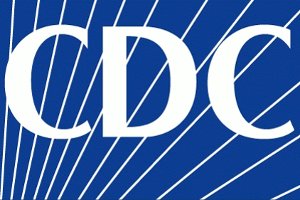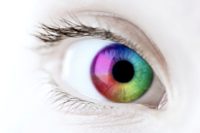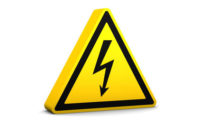 The Centers for Disease Control and Prevention (CDC) recommends eye protection for a variety of potential exposure settings where workers may be at risk of acquiring infectious diseases via ocular exposure.
The Centers for Disease Control and Prevention (CDC) recommends eye protection for a variety of potential exposure settings where workers may be at risk of acquiring infectious diseases via ocular exposure.
In this case, background information and specific details on eye protection that can be used to supplement eye protection recommendations provided in current CDC infection control guidance documents are provided
Workers should understand that regular prescription eyeglasses and contact lenses are not considered eye protection.
Infectious diseases can be transmitted through various mechanisms, among which are infections that can be introduced through the mucous membranes of the eye (conjunctiva). These include viruses and bacteria than can cause conjunctivitis (e.g., adenovirus, herpes simplex, Staphylococcus aureus) and viruses that can cause systemic infections, including bloodborne viruses (e.g. hepatitis B and C viruses, human immunodeficiency virus), herpes viruses, and rhinoviruses.
Infectious agents are introduced to the eye either directly (e.g., blood splashes, respiratory droplets generated during coughing or suctioning) or from touching the eyes with contaminated fingers or other objects.
What types of eye protection should be worn?
There is wide variety in the types of protective eyewear, and appropriate selection should be based on a number of factors, the most important of which is the nature and extent of the hazard.
Eye protection must be comfortable and allow for sufficient peripheral vision and must be adjustable to ensure a secure fit. It may be necessary to provide several different types, styles, and sizes.
Selection of protective eyewear appropriate for a given task should be made from an evaluation of each activity, including regulatory requirements when applicable. These hazard assessments require a clear understanding of the work tasks, including knowledge of the potential routes of exposure and the opportunities for exposure in the task assessed (nature and extent of worker contact). Exposure incident reports should be reviewed to identify those incidents (whether or not infection occurred) that could have been prevented by the proper use of protective eyewear.
Common eye protection devices are as follows:
Goggles
Appropriately fitted, indirectly-vented goggles* with a manufacturer’s anti-fog coating provide the most reliable practical eye protection from splashes, sprays, and respiratory droplets. Newer styles of goggles may provide better indirect airflow properties to reduce fogging, as well as better peripheral vision and more size options for fitting goggles to different workers. Many styles of goggles fit adequately over prescription glasses with minimal gaps. However, to be efficacious, goggles must fit snugly, particularly from the corners of the eye across the brow. While highly effective as eye protection, goggles do not provide splash or spray protection to other parts of the face.
* Directly-vented goggles may allow penetration by splashes or sprays; therefore, indirectly-vented or non-vented goggles are preferred for infection control.
Face Shields
Face shields are commonly used as an infection control alternative to goggles.** As opposed to goggles, a face shield can also provide protection to other facial areas. To provide better face and eye protection from splashes and sprays, a face shield should have crown and chin protection and wrap around the face to the point of the ear, which reduces the likelihood that a splash could go around the edge of the shield and reach the eyes. Disposable face shields for medical personnel made of light weight films that are attached to a surgical mask or fit loosely around the face should not be relied upon as optimal protection.
** In a chemical exposure or industrial setting, faceshields should be used in addition to goggles, not as a substitute for goggles (ANSI Z87.1-2003 Practice for occupational and educational eye and face protection).
Safety Glasses
Safety glasses provide impact protection but do not provide the same level of splash or droplet protection as goggles and generally should not be used for infection control purposes.
Full-face Respirators
Full facepiece elastomeric respirators and powered air-purifying respirators (PAPRs) are designed and used for respiratory protection, but because of their design incidentally provide highly effective eye protection as well. Selection of this type of PPE should be based on an assessment of the respiratory hazard in an infection control situation, but will also provide, as an additional benefit, optimal eye protection.
What eye protection is available for prescription lenses users?
Many safety goggles or plano (non-prescription) safety glasses fit comfortably over street eyewear and can provide satisfactory protection without impairing the fit of the prescription eyewear. Prescription safety glasses with side protection are available, but do not protect against splashes or droplets as well as goggles. Special prescription inserts are available for goggles. When full facepiece elastomeric negative pressure (i.e., non-powered) respirators or tight-fitting powered air purifying respirators (PAPRs) are indicated for respiratory protection, these devices require appropriate prescription inserts to avoid compromising the seal around the face; PAPRs designed with loose-fitting facepieces or with hoods that completely cover the head and neck may be more accommodating to prescription lens wearers.
Contact lenses, by themselves, offer no infection control protection. However, contact lenses may be worn with any of the recommended eye protection devices, including full-face respirators. Contact lens users should rigorously adhere to hand washing guidelineswhen inserting, adjusting, or removing contact lenses.
What combination of eye protection and other PPE should be used?
Eye protection should be selected in the context of other PPE use requirements. Safety goggles may not fit properly when used with certain half-face respirators, and similarly, face shields may not fit properly over some respirators. Once PPE requirements have been established for a specific infection control situation, the selected PPE should be pre-tested to assure suitable fit and protection when used as an ensemble. Elastomeric, full facepiece respirators and powered air-purifying respirators (PAPRs) have the advantage of incidentally providing optimal eye protection. In situations where all combinations of PPE may not be readily available to workers, judicious selection of complementary PPE is important to allow for appropriate protection.
How should potentially contaminated eye protection be removed?
Eye protection should be removed by handling only the portion of this equipment that secures the device to the head (i.e., plastic temples, elasticized band, ties), as this is considered relatively "clean." The front and sides of the device (i.e., goggles, face shield) should not be touched, as these are the surfaces most likely to become contaminated by sprays, splashes, or droplets during patient care. Non-disposable eye protection should be placed in a designated receptacle for subsequent cleaning and disinfection.
Can another worker reuse my eye protection?
The eyewear described above is generally not disposable and must be disinfected before reuse. Where possible, each individual worker should be assigned his/her own eye protection to insure appropriate fit and to minimize the potential of exposing the next wearer. A labeled container for used (potentially contaminated) eye protection should be available in the HCW change-out/locker room. Eye protection deposited here can be collected, disinfected, washed, and then reused.
How should eye protection be disinfected?
Healthcare setting-specific procedures for cleaning and disinfecting used patient care equipment should be followed for reprocessing reusable eye protection devices. Manufacturers may be consulted for their guidance and experience in disinfecting their respective products. Contaminated eye protection devices should be reprocessed in an area where other soiled equipment is handled. Eye protection should be physically cleaned and disinfected with the designated hospital disinfectant, rinsed, and allowed to air dry. Gloves should be worn when cleaning and disinfecting these devices.





